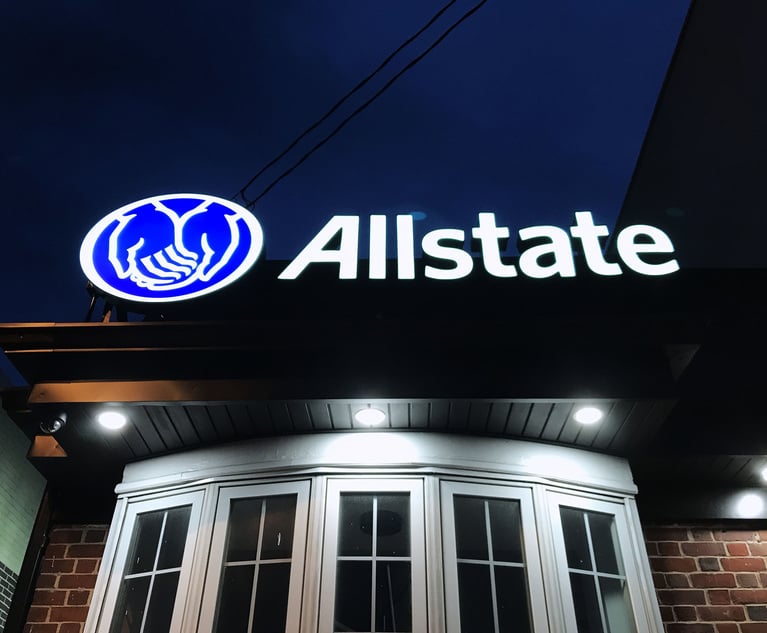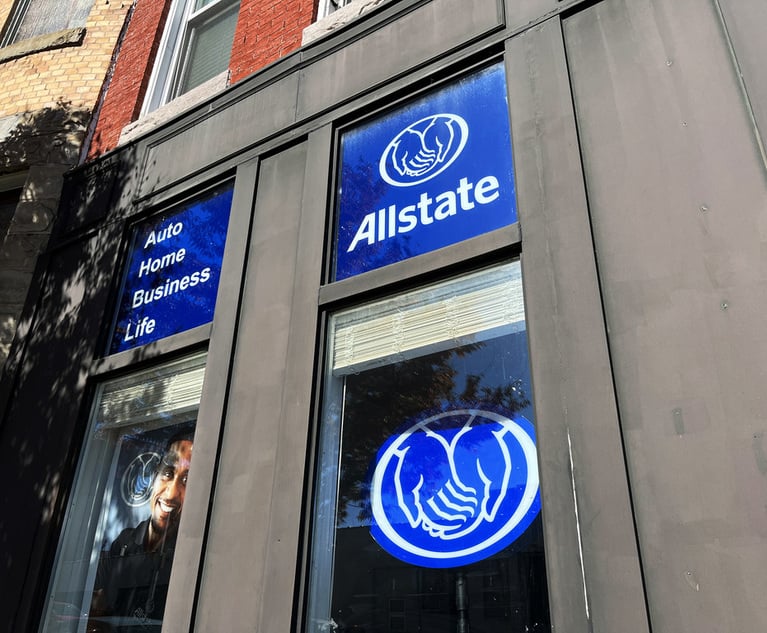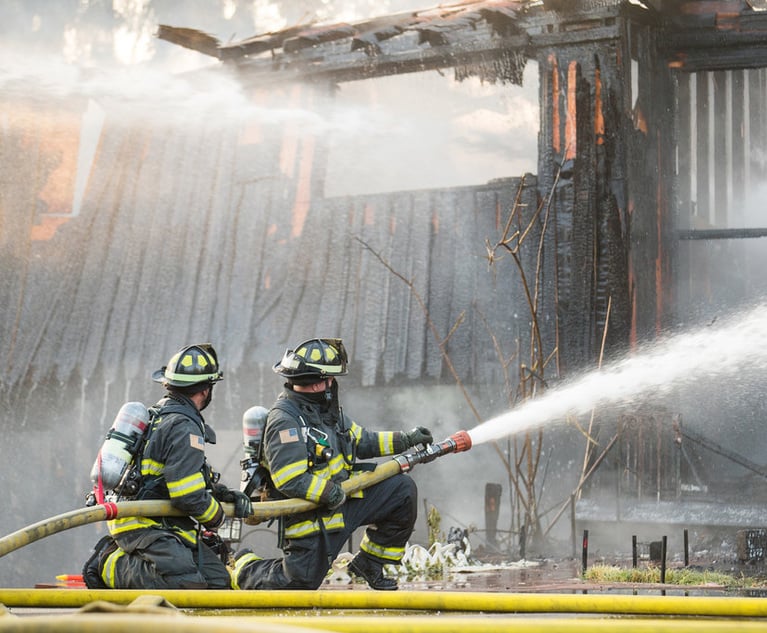Legal Malpractice Payouts Climb, and With COVID-19, No Crest in Sight
The 2008 recession caused claims to skyrocket. Expect the same to follow for the next few years.
May 26, 2020 at 05:00 AM
4 minute read
The original version of this story was published on The American Lawyer
 (Photo: Shutterstock.com)
(Photo: Shutterstock.com)
The number of eye-popping legal malpractice payouts surged in 2019, according to a recent study by insurance broker Ames & Gough, but the business disruptions posed by the COVID-19 crisis suggest that last year will only be a precursor.
The 2008 recession proved to be a trigger for a previous wave of clients going after their law firms in court. And in the coming years, distressed businesses will undoubtedly look at contracts that weren't enough to shield them from the manifold consequences of an economy that was abruptly forced to shut down and seek to pin blame on their lawyers.
"Last year's rise in the number of claims, compared to the next few years, is likely to look like a Sunday picnic in the park," said Clyde & Co. professional responsibility expert Anthony Davis.
In the study, Ames & Gough polled 10 leading lawyers' professional liability insurance companies, which collectively insure roughly 80% of the Am Law 100. Eight of the 10 said that the volume of claims brought in 2019 was either the same or higher than in 2018, with six pointing to an increase. This was the first year since 2013 that claims had grown from the previous year.
The largest number of claims stemmed from three areas, business transactions, corporate and securities, and trusts and estates.
It's unsurprising that a brisk economy would yield growing amounts of transactional and securities work, prompting the number of flawed representations to rise proportionately.
"With so much riding on the success of any deal, clients inevitably point fingers at their lawyers when things don't go as planned," Eileen Garczynski, senior vice president and partner at Ames & Gough, said in a statement. "Once a firm accepts this type of engagement, it should immediately identify any potential risks and make sure they have all the resources and capabilities needed to handle the related work effectively."
And demand for trusts and estates work has also risen, thanks to demographic transitions, prompting a wave of inter-generational money transfers.
The severity of claims has grown as well. All 10 insurers had at least five claims in which the reserve, the sum of indemnity and defense costs, exceeded $500,000; while six had over 21 such matters. Meanwhile, eight of the insurers had participated in at least one claim of over $100 million in 2019, and four had been parties to over three such matters.
With the COVID-19 pandemic wreaking havoc on the global economy, firms will undoubtedly be getting used to the heightened level of activity. But that doesn't mean it's pointless to take measures to manage risks, including paying careful attention to supervision of lawyers, suitability of clients, and staying within the bounds of their engagement letters.
One potential landmine is when firms are asked to defend the same contracts they've originally drafted, after they've been called into question. This scenario presents the possibility of lawyers developing a self-interest that diverges from their clients.
"Before undertaking this kind of litigation, firms need to have an internal or, better yet, external review of the underlying work product, and then still make adequate disclosure to the client and obtain an appropriate waiver. On an ongoing basis, firms have to remain conscious of the conflict and tell the client, 'This is why we're doing it this way,'" Davis said. "The risk of not adhering to the conflict of interest protocols, and defending the prior work at all costs may, in the most egregious cases, give the client a second malpractice claim—one based on the the underlying mistake and the second based on the way the firm litigated it."
And expect the surge to continue for years. While the first wave will focus on the drafting of those contracts under dispute, the second wave, on how these contracts are defended, will be based on actions that have yet to happen.
This content has been archived. It is available through our partners, LexisNexis® and Bloomberg Law.
To view this content, please continue to their sites.
Not a Lexis Subscriber?
Subscribe Now
Not a Bloomberg Law Subscriber?
Subscribe Now
NOT FOR REPRINT
© 2025 ALM Global, LLC, All Rights Reserved. Request academic re-use from www.copyright.com. All other uses, submit a request to [email protected]. For more information visit Asset & Logo Licensing.
You Might Like
View All

Statute of Limitations Shrivels $5M Jury Award to Less than $1M, 8th Circuit Rules
4 minute read
Allstate Is Using Cell Phone Data to Raise Prices, Attorney General Claims
5 minute read
Once the LA Fires Are Extinguished, Expect the Litigation to Unfold for Years
5 minute readTrending Stories
- 1How ‘Bilateral Tapping’ Can Help with Stress and Anxiety
- 2How Law Firms Can Make Business Services a Performance Champion
- 3'Digital Mindset': Hogan Lovells' New Global Managing Partner for Digitalization
- 4Silk Road Founder Ross Ulbricht Has New York Sentence Pardoned by Trump
- 5Settlement Allows Spouses of U.S. Citizens to Reopen Removal Proceedings
Who Got The Work
J. Brugh Lower of Gibbons has entered an appearance for industrial equipment supplier Devco Corporation in a pending trademark infringement lawsuit. The suit, accusing the defendant of selling knock-off Graco products, was filed Dec. 18 in New Jersey District Court by Rivkin Radler on behalf of Graco Inc. and Graco Minnesota. The case, assigned to U.S. District Judge Zahid N. Quraishi, is 3:24-cv-11294, Graco Inc. et al v. Devco Corporation.
Who Got The Work
Rebecca Maller-Stein and Kent A. Yalowitz of Arnold & Porter Kaye Scholer have entered their appearances for Hanaco Venture Capital and its executives, Lior Prosor and David Frankel, in a pending securities lawsuit. The action, filed on Dec. 24 in New York Southern District Court by Zell, Aron & Co. on behalf of Goldeneye Advisors, accuses the defendants of negligently and fraudulently managing the plaintiff's $1 million investment. The case, assigned to U.S. District Judge Vernon S. Broderick, is 1:24-cv-09918, Goldeneye Advisors, LLC v. Hanaco Venture Capital, Ltd. et al.
Who Got The Work
Attorneys from A&O Shearman has stepped in as defense counsel for Toronto-Dominion Bank and other defendants in a pending securities class action. The suit, filed Dec. 11 in New York Southern District Court by Bleichmar Fonti & Auld, accuses the defendants of concealing the bank's 'pervasive' deficiencies in regards to its compliance with the Bank Secrecy Act and the quality of its anti-money laundering controls. The case, assigned to U.S. District Judge Arun Subramanian, is 1:24-cv-09445, Gonzalez v. The Toronto-Dominion Bank et al.
Who Got The Work
Crown Castle International, a Pennsylvania company providing shared communications infrastructure, has turned to Luke D. Wolf of Gordon Rees Scully Mansukhani to fend off a pending breach-of-contract lawsuit. The court action, filed Nov. 25 in Michigan Eastern District Court by Hooper Hathaway PC on behalf of The Town Residences LLC, accuses Crown Castle of failing to transfer approximately $30,000 in utility payments from T-Mobile in breach of a roof-top lease and assignment agreement. The case, assigned to U.S. District Judge Susan K. Declercq, is 2:24-cv-13131, The Town Residences LLC v. T-Mobile US, Inc. et al.
Who Got The Work
Wilfred P. Coronato and Daniel M. Schwartz of McCarter & English have stepped in as defense counsel to Electrolux Home Products Inc. in a pending product liability lawsuit. The court action, filed Nov. 26 in New York Eastern District Court by Poulos Lopiccolo PC and Nagel Rice LLP on behalf of David Stern, alleges that the defendant's refrigerators’ drawers and shelving repeatedly break and fall apart within months after purchase. The case, assigned to U.S. District Judge Joan M. Azrack, is 2:24-cv-08204, Stern v. Electrolux Home Products, Inc.
Featured Firms
Law Offices of Gary Martin Hays & Associates, P.C.
(470) 294-1674
Law Offices of Mark E. Salomone
(857) 444-6468
Smith & Hassler
(713) 739-1250








